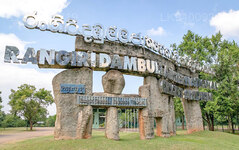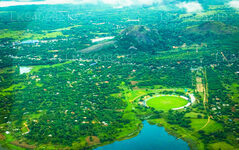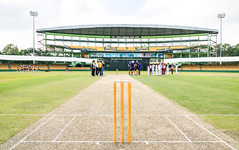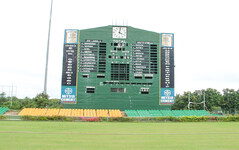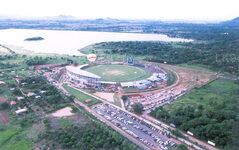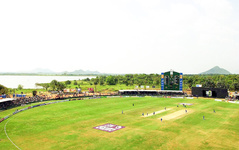
Dambulla City
Journey into the heart of cultural splendor in Dambulla, where ancient history meets modern exploration. Uncover the marvels of the UNESCO-listed Dambulla Cave Temple, meander through vibrant markets, and savor the unique fusion of tradition and innovation in this enchanting Sri Lankan town.
Rangiri Dambulla International Stadium Dambulla
Rangiri Dambulla International Cricket Stadium Dambulla
The Rangiri Dambulla International Stadium is significant cricket grounds. The ground is expanded across 60-acre land leased from the Rangiri Dambulla Temple. The idea behind building the ground was to provide a venue to conduct one-day matches throughout the year. The construction took only 167 days, and the ground officially opened its gates in 2000.
History
Construction was funded by the Board of Control for Cricket in Sri Lanka (BCCSL) and championed by the then BCCSL President, Thilanga Sumathipala. Construction took only 167 days. After construction and the inaugural match it sat idle due to complications with the lease and the contractors. International cricket finally returned in May 2003, the venue staging all seven matches of the tournament because of monsoon rains in the south.
- The inaugural One Day International (ODI) match was played between Sri Lanka and England in March 2001.
- Floodlights were installed in 2003.
- This stadium hosted all the matches of the Asia Cup 2010, due to renovation of other grounds for the 2011 Cricket World Cup.
- The stadium hosted only day matches from 2013 until late 2016.
Location
The Rangiri Dambulla International Stadium is situated in the North Central Province of Sri Lanka, near Dambulla.The ground is situated in the dry zone. It overlooks the Dambulla Tank (reservoir) and the Dambulla Rock. It comes under the dry zone of the country.
About The Pitch
The ground's pitch is considered as the first choice of bowlers as it provides soothing soil to seamers in the morning with a high water table and to spinners in the afternoon when it can crumble.
About Matale District
Matale is a town in the hill country of Sri Lanka. The Knuckles Mountain Range is a special landmark of Matale.The Matale administrative district also contains the historic Sigiriya rock castle, Aluvihare Temple and Dambulla Cave Temple . Surrounding the town are the Knuckles foothills called Wiltshire. It is a mainly agricultural area, where tea, rubber, vegetable and spice cultivation dominate.
The Aluvihare Temple, on the North side of the town, is the historic location where the Pali Canon was first written down completely in text on ola (palm) leaves. Situated near Aluvihare are numerous monastery caves, some of which exhibit fine frescoes.
About Central Province
The Central Province of Sri Lanka consists primarily of mountainous terrain. The province has an area of 5,674 km², and a population of 2,421,148. Some major towns include Kandy, Gampola (24,730), Nuwara Eliya and Bandarawela. The population is a mixture of Sinhalese, Tamil and the Moors.
Both the hill capital Kandy and the city of Nuwara Eliya are located within the Central Province as well as Sri Pada. The province produces much of the famous Ceylon tea, planted by the British in the 1860s after a devastating disease killed all the coffee plantations in the province. Central Province attracts many tourists, with hill station towns such as Kandy, Gampola, Hatton and Nuwara Eliya. Temple tooth or Dalada maligawa is the main sacred place in Centrel province.
The climate is cool, and many areas about 1500 meters often have chilly nights. The western slopes are very wet, some places having almost 7000 mm of rain per year. The eastern slopes are parts of the mid-dry zone as it is receiving rain only from North-Eastern monsoon. The Temperatures range from 24°C at Kandy to just 16°C in Nuwara Eliya, which is located 1,889 m above sea level. The highest mountains in Sri Lanka are located in the Central Province. The terrain is mostly mountainous, with deep valleys cutting into it. The two main mountain regions are the central massif and the Knuckles range to the east of Kandy.

